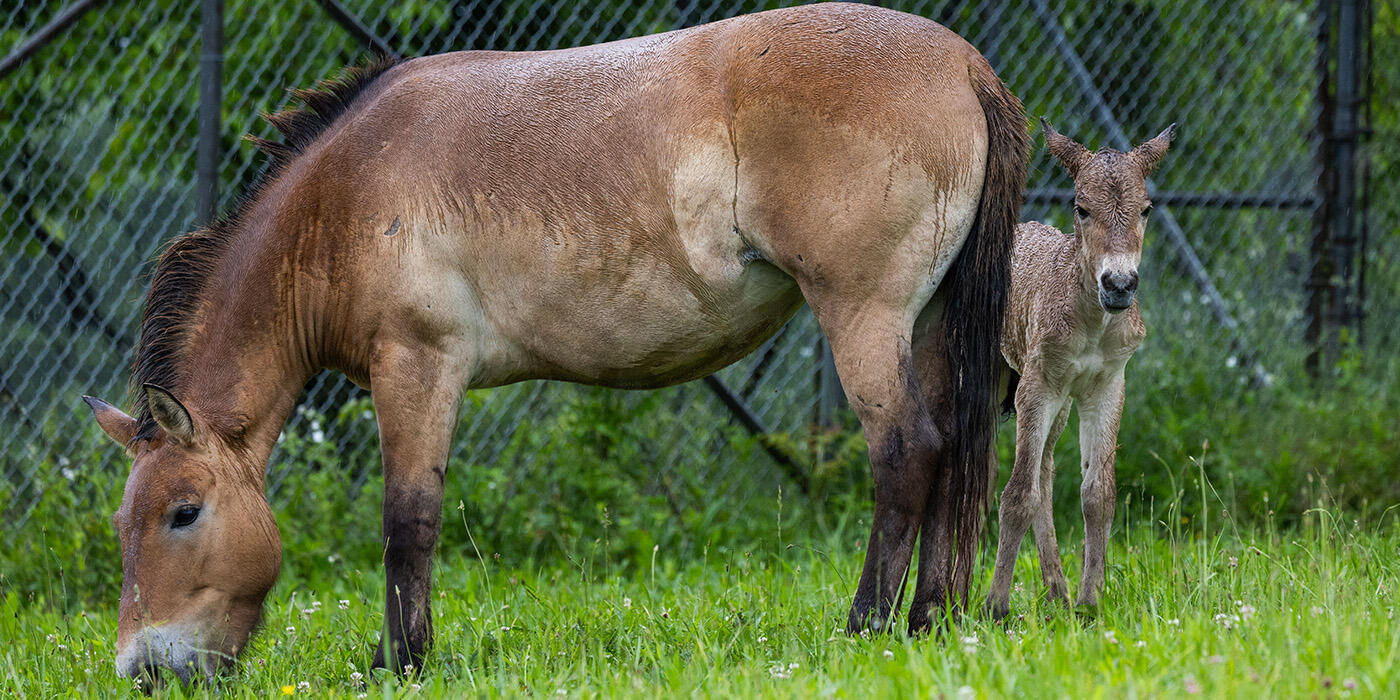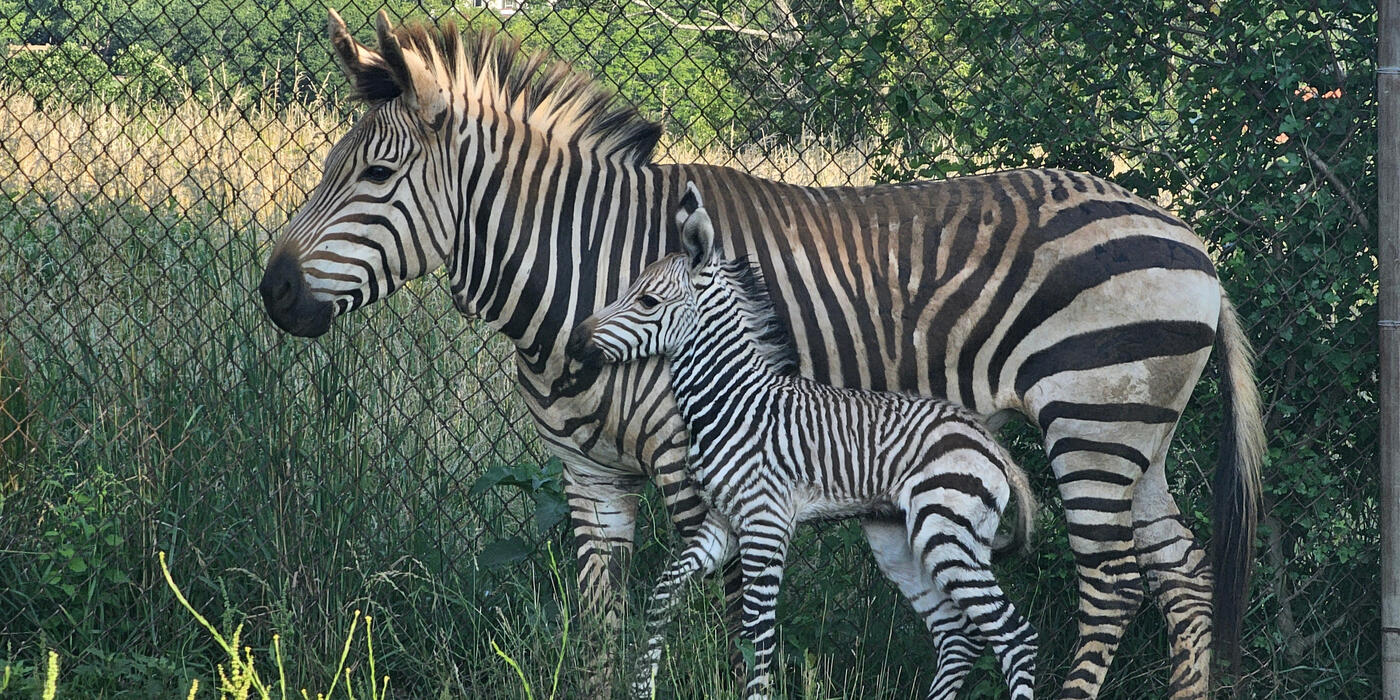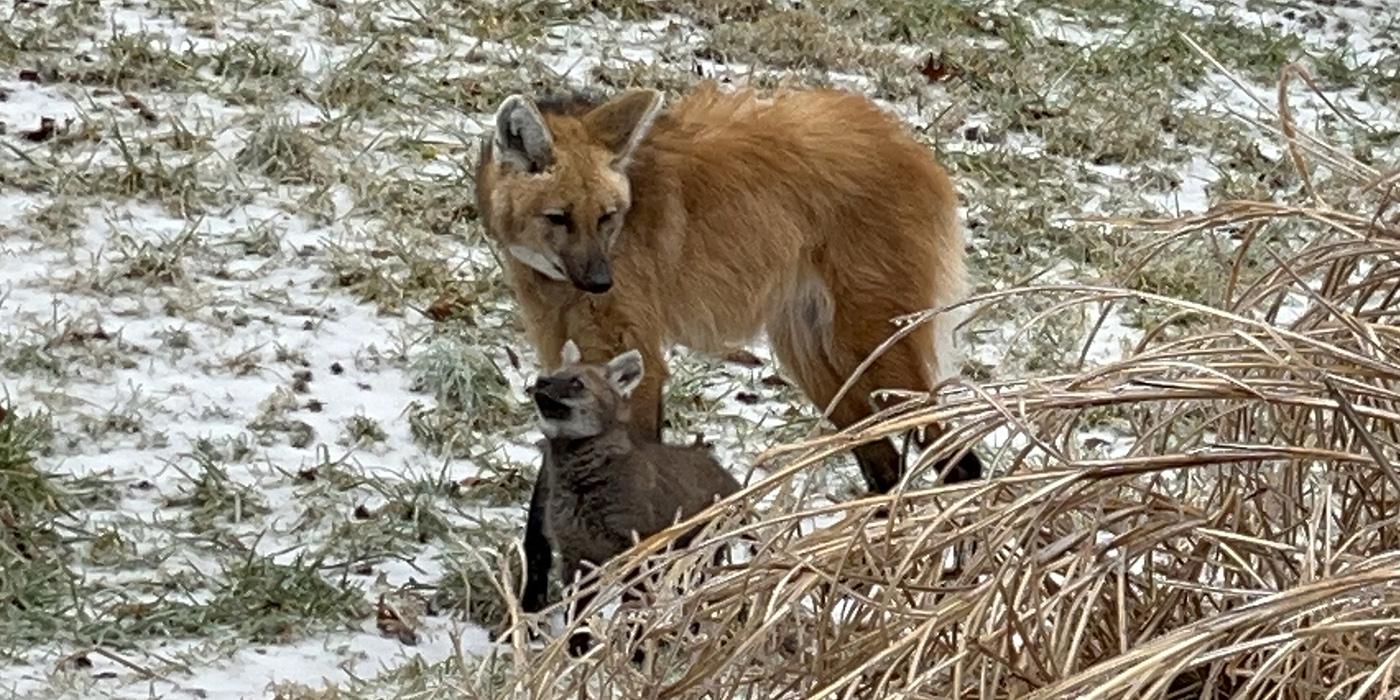Behind the Scenes at SCBI: A Przewalski’s Horse With a History of “Over-Aunting”

This post was written by Supervisory Biologist Dolores Reed.
At the Smithsonian’s Conservation Biology Institute, the birth of a Przewalski’s horse foal this spring brought joy — and a little drama.
In the early hours of May 23, first-time mom Waneta (pictured above) gave birth to a healthy male foal, or colt. Mother and colt were bonding nicely, but the keeper team was keeping an eye on a potential cause for concern from the herd: Emma, an elderly mare with a reputation for ”over-aunting”.
Helping care for the youngest herd member is an urge that’s common in many social species, but 21-year-old Emma has a history of taking it to the extreme. Two years ago, Emma “adopted” her own granddaughter from her daughter — excluding her daughter from parenting while she attempted to raise the foal herself! This created a potentially dangerous situation for the young foal, who was still dependent on her mother for nursing.
This time around, we took precautions. Waneta and her new foal were temporarily separated from the herd, with visual access to reduce stress. Bonding appeared to go smoothly. Once we reintroduced the mother and colt to the herd, we observed Waneta taking good care of the colt and not letting Emma or any of the other 6 mares within the herd near him.
But within just a few hours, Emma seized her chance… literally. She had spirited the colt away! Waneta tried valiantly to reclaim her baby, but Emma kept him close. Keepers and veterinary staff stepped in, safely sedating Emma to reunite the colt with his rightful mother and ensuring the colt received his much-needed nourishment in the form of milk from mom.
The pair recovered in peace, and after 10 days, we introduced them to a group of gentler “auntie” mares, Anne, Winnie, and Willa. Today, the colt is thriving: he’s curious, playful, and constantly testing his boundaries and pestering his mother. When he gets bigger, we will rejoin this group with the whole herd. As of now, Waneta keeps a close watch… and Emma is under close watch herself.
Foal drama aside, these births are crucial. Each new arrival contributes to the future of vulnerable equids, from wild horses to mountain zebras, and helps us better understand what is needed to support and protect these animals in their native habitats.
For more: Checking In on the Foals: New Arrivals at the Smithsonian Conservation Biology Institute
Want more animal updates? Sign up for the National Zoo News and get updates on animal care, zoo events, and conservation delivered straight to your inbox.
Related Species:



